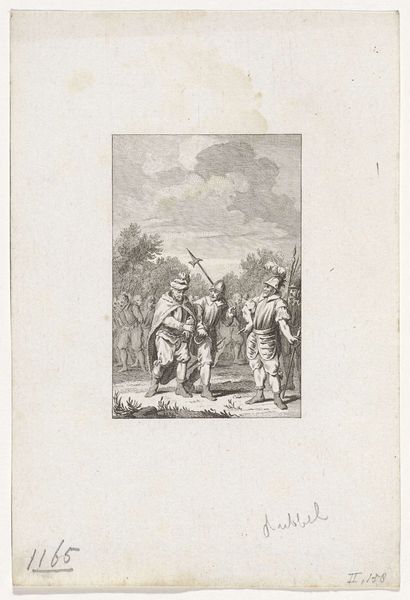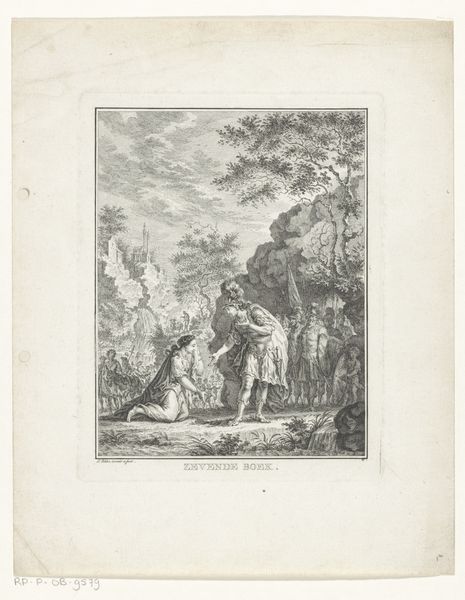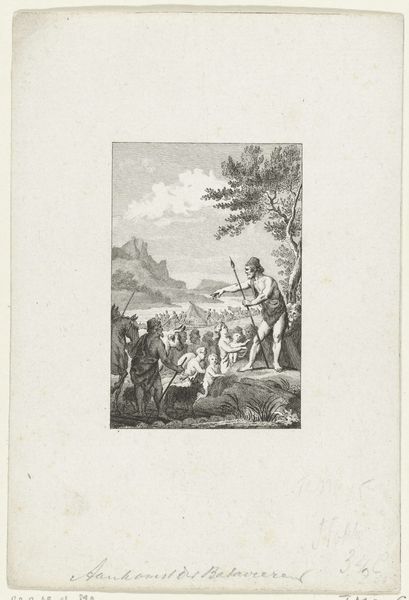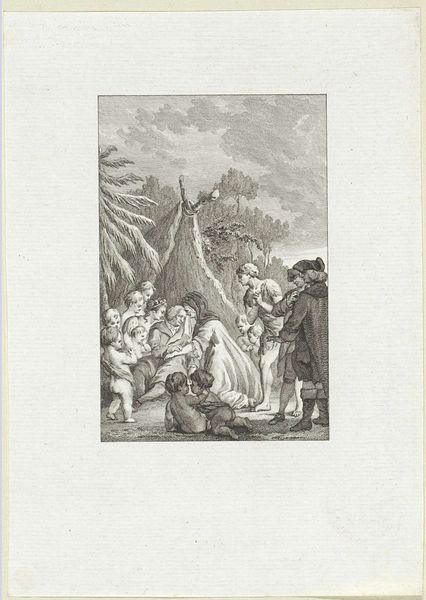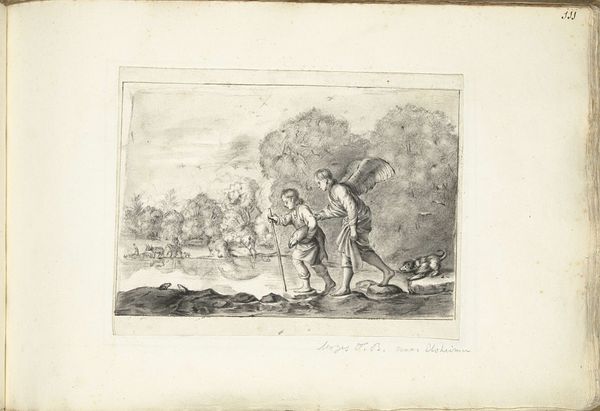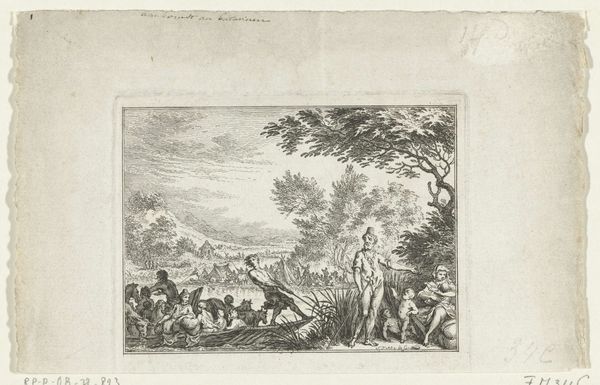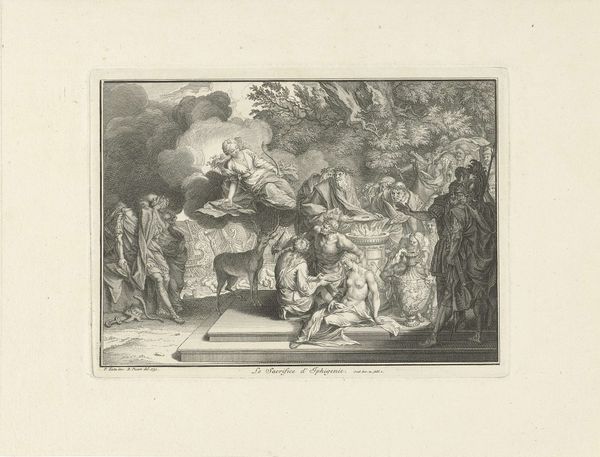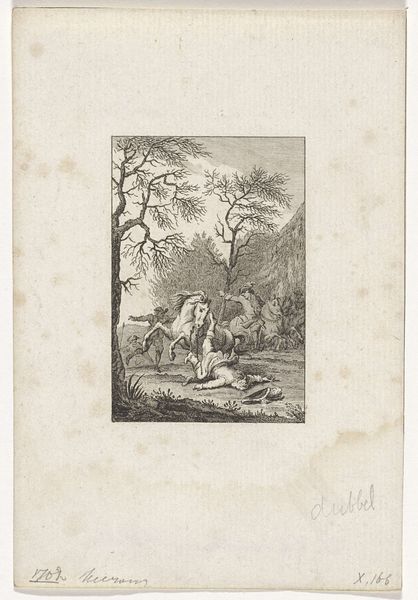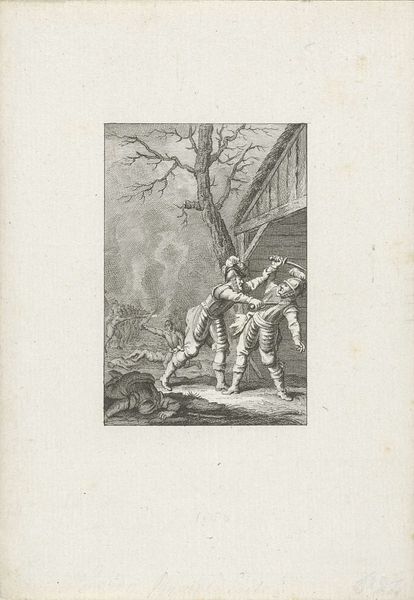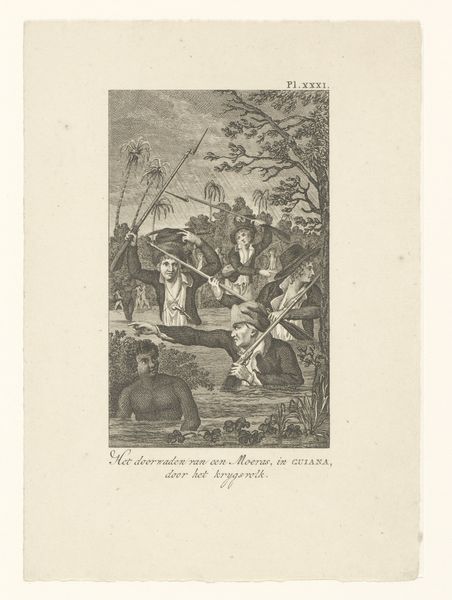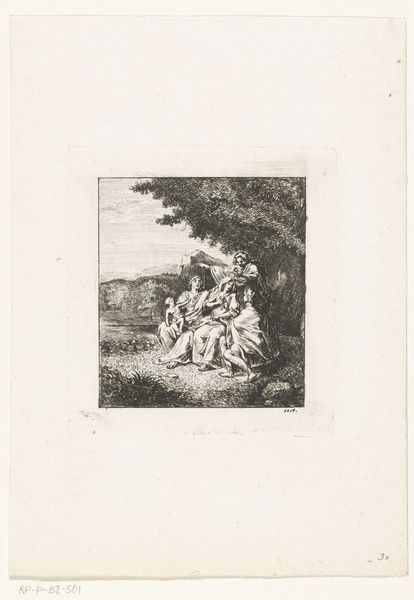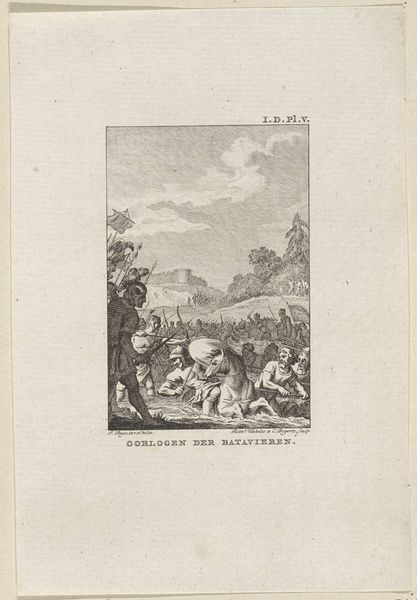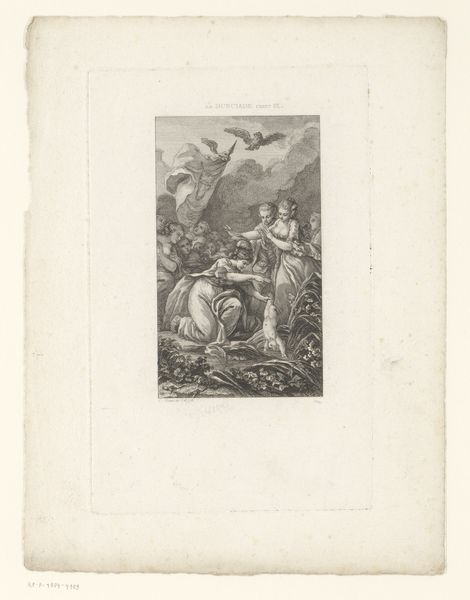
print, engraving
# print
#
old engraving style
#
genre-painting
#
history-painting
#
engraving
Dimensions: height 160 mm, width 100 mm
Copyright: Rijks Museum: Open Domain
Reinier Vinkeles made this etching, titled "Moord op Floris I, 1061," sometime between 1741 and 1816. It depicts the assassination of Floris the First, Count of Holland, which took place in 1061. But what did this event mean to the Dutch in the 18th century, when the print was made? The image creates meaning through its references to Dutch history and national identity. We see an idealized version of the past, full of heroic figures. The scene is dramatic, with men fighting, and the visual codes evoke ideas of bravery. It was made during a period of intense national self-reflection and the Dutch Republic was in decline, facing economic and political challenges. Artists and intellectuals turned to the past for inspiration and to create a sense of shared identity. Historical prints like this one played a crucial role in shaping national consciousness. Understanding the social and institutional context in which art is made is essential for interpreting its meaning, and resources like historical archives can shed light on its significance.
Comments
No comments
Be the first to comment and join the conversation on the ultimate creative platform.
